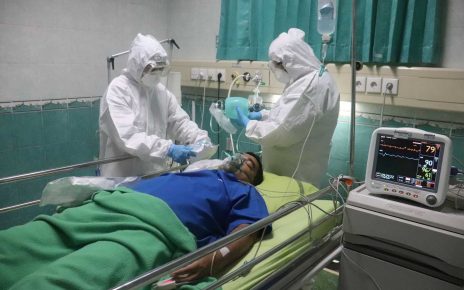Carbon monoxide (CO), like many gases, cannot be detected by our human senses. We cannot see it, smell it or taste it. But unlike many gases, small amounts are extremely harmful to us.
In 2015 (the most recent year for which statistics are available), 53 people in the UK died from accidental carbon monoxide poisoning. This compares with 170 people in the US. While this may not seem like a huge amount, deaths from carbon monoxide are largely preventable. There is, however, a general lack of knowledge about the dangers of carbon monoxide among both the general public and the scientific community.
The symptoms
We know the most about acute poisoning; we have some understanding of the wide range of symptoms and after effects that people who are poisoned in a single episode to a large amount of carbon monoxide suffer. But what we don’t know as much about are the effects of poisoning at lower levels, where people are exposed to smaller amounts of carbon monoxide, sometimes over a lengthy period, that do not trigger their carbon monoxide alarm.
Such people suffer nonspecific but significant symptoms. They may well have engaged with healthcare professionals, and had their symptoms investigated, but the nature of such symptoms do not lend themselves to a straightforward diagnosis once obvious physiological causes have been discounted.
The symptoms of acute poisoning may include headache, stomach upsets, dizziness, drowsiness, confusion, and seizure, leading to coma and death. These are the cases that are more likely to be reported by the media.
Those of chronic poisoning, meanwhile are variable, somewhat vague, and nonspecific. People report fatigue, flu-like symptoms, memory issues, musculoskeletal pain, motor disorders and emotional (affective) disorders, where they may be irritable, moody or depressed. These symptoms vary widely from person to person, for reasons as yet not fully understood, but are not necessarily connected to the amount of carbon monoxide to which they have been exposed.
Fine – or dead
Another aspect of the lack of knowledge about carbon monoxide concerns the aftermath of poisoning. Carbon monoxide is understood to leave the blood quickly once the person is away from the source of poisoning.
This is in line with the popular view of how we are poisoned, which is that the damage carbon monoxide causes results from oxygen starvation (hypoxia), as carbon monoxide binds with haemoglobin to form carboxyhaemoglobin. Oxygen cannot, therefore, be transported in to or out of the body’s organs and tissues. A person is essentially slowly suffocated.
This line of thinking means that the assumption that once the person is away from the carbon monoxide, recovery will commence, is easily made. But mechanisms of poisoning are more complicated. Hypoxia undoubtedly plays a significant role, as does what is known as reperfusion injury, which is further damage caused when oxygen returns to tissues that have been previously starved. Carbon monoxide, however, also binds to proteins other than haemoglobin, and it is a toxin which is known to affect cellular respiration and causes an inflammatory response. The brain and the heart seem most susceptible to damage.
People who have been poisoned may therefore suffer from neurological or cognitive deficits, psychological effects and cardiovascular issues. Cruelly, such symptoms may occur weeks after initial poisoning symptoms have abated, and for some people they will be permanent.
Prolonged impact
What also often remains unsaid but is crucial to consider is the emotional toll of poisoning. This is something that is evident from my ongoing research, which centres on collecting the accounts of those who have been affected by carbon monoxide poisoning.
One sufferer I’ve spoken to has had to change her career entirely, as she could no longer cope with the demands of running her own, previously very successful, business. A young teacher I met with struggles with hyperacuity, meaning that she has become extremely and painfully sensitive to all loud noises. Relationships can also be adversely affected, as people don’t have the same emotional behaviours, and memories are altered. A husband I spoke to completely forgot that his wife of 30 years had never liked drinking tea. It has a significant impact: people have to learn to live with what is in effect a brain injury.
Such sufferers may not be able to communicate, work or perform their usual daily activities in the same way that they did before they were poisoned. Some of my participants had many months or even years of visiting GPs and having investigations, only to be told that there is nothing wrong to be found. It is natural, of course, for GPs to focus on the person in front of them, rather than that person’s environment. There is currently very little tailored support for people in this situation.
Steps to take
Carbon monoxide is common; our bodies generate very small, measurable amounts. Habitual tobacco users have higher quantities, but seemingly without the burdensome, nonspecific symptoms described here. In domestic settings, excess carbon monoxide is formed by the incomplete combustion of any carbon-based fuel; so any faulty heating or cooking appliance using gas, wood, coal or smokeless fuel, and so on, could be a risk.
Many homes in middle and low income countries rely on some sort of solid fuel for cooking, lighting and heating, with the result that significant quantities of carbon monoxide are released into the indoor environment, although statistics are not always readily available for the burden of suffering that this causes.
In contrast, we know that one in six UK homes are estimated to have a dangerous gas appliance. Gas appliances should ideally be serviced annually. This includes all of the mandatory safety checks and some manufacturer-specific checks to ensure that the gas is burning safely.
Source: Read Full Article



